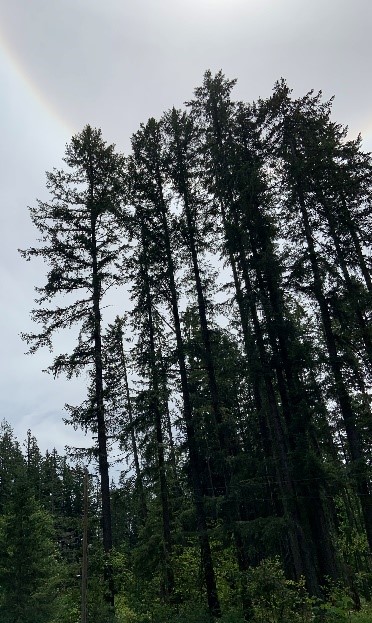Our native Douglas fir (Pseudotsuga menziesii), is an evergreen conifer which grows from the eastern edge of the Cascades west to the Pacific Ocean and is the dominant tree in the Pacific Northwest occurring in nearly all forest types. Adapted to a moist, mild climate, it commonly grows 13-24 inches per year for a total height of 195-245 feet.
The Douglas fir is not a true fir tree. The genus name (Pseudotsuga) suggests that it is similar to hemlock trees. Pseudo- means false, and Tsuga is the genus for hemlocks. This tree is one of many conifers included in the Pinaceae family. Others are cedars, the deciduous conifers, fir trees, pine trees and spruce trees.
The tree is extensively used in forestry for as a plantation tree for softwood timber due to its strength, hardness and durability. It is also commonly used as a Christmas tree. Douglas fir buds have been used to flavor eau de vie, a clear, colorless fruit brandy and its needles can be used to make pine-needle tea. Native Hawaiians built canoes from Douglas fir logs that drifted ashore and Native American groups mostly used the tree as fuel for cooking. The wood was also used for tools such as spear and harpoon shafts, fishing hooks and for handles. The branches were used for covering the floors of lodges and sweat lodges as well as for purifying and warding off ghosts in some Salish and other Northwest Indian rituals. Fir bark and resin have also been used as medicine herbs by many Native Americans.
The Douglas fir has long been associated with protection by the native cultures of the Pacific Northwest. Native folklore weaves a story of a great forest fire and a mouse seeking refuge in the canopy of the tree. The Douglas fir thought its thick bark would protect it from the ravages of the fire below and invited the mouse and those that would follow, to climb into his massive canopy and find shelter in his cones. The mice did so, leaving their feet and tails exposed beneath the thumb shaped scales of the cone – and both the tree and the mice survive the great fire. Other versions of this fable portray mice seeking shelter from a dire storm or deep snow and famine. To this day, when you look closely at a Douglas Fir cone, the mouse’s back legs and tail are still visible beneath the cone’s scales!


